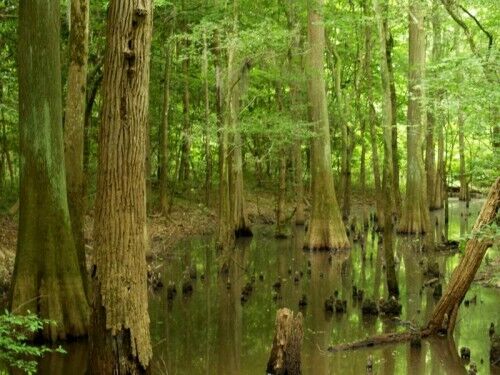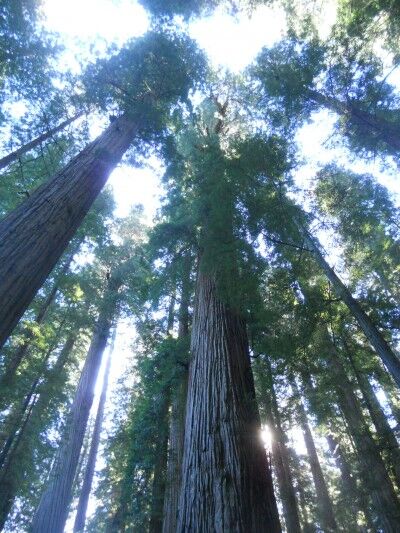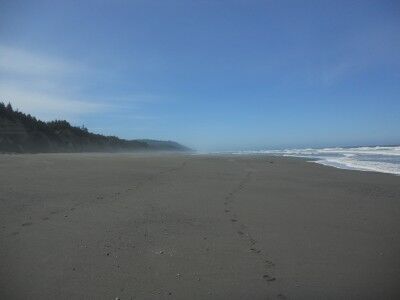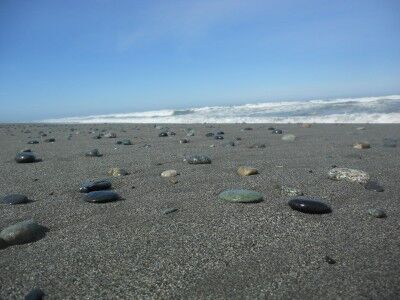If you like the idea of exploring areas that seem like lost worlds, you will truly enjoy Fern Canyon in Prairie Creek Redwoods state park (CA) which is part of Redwood National Park. While you definitely should take some time to enjoy Gold Bluffs Beach (since many will ignore it), that doesn’t mean that you want to miss Fern Canyon which is about another 2 miles down the road. An informational sign at the trailhead next to the parking lot gives the following description of Fern Canyon:
Millions of years ago, a retreating sea left these coastal bluffs behind. Waters draining to the ocean sculpted the rocky formations into sheer canyon walls. Some of the exquisite ferns now clinging to the steep, shadowy cliffs are ancient species whose ancestry can be traced back 325 million years.
The canyon is now shrouded with lush five-fingered ferns, dark green sword ferns, and delicate lady ferns. Scouring winter floods periodically rush through the canyon, sweeping debris from its floor. Spruce and red alder saplings often survive for a few years on small terrace ledges, but they rarely reach maturity before falling off or being swept away.
Seeping water supply year-round dampness for the dense foliage and provide habitat for a diverse mix of moisture loving creatures such as salamanders, frogs and dippers. Several perennial waterfalls cascade from the canyon rim, adding to the cool moist canyon microclimate.
It’s less than a quarter of a mile to the canyon entrance, and you’ll immediately see that you’re in for a wonderful journey as light makes its way sporadically through the thick foliage:

You’ll also realise that it’s worthwhile packing an extra layer (especially if you do the hike in the morning) since the temperature drops a few degrees once you get into the canyon. Apparently the rangers set up wood bridge crossings in the summer so that you don’t get wet from the river as you make your way up the canyon, but those were not in place when I went in mid June. Other hikers had created makeshift crossings with the fallen trees and wood debris in the canyon which meant that it’s possible to survive the canyon hike without getting your shoes wet if you’re very careful. I have pretty decent balance, but there were a few times I almost found my feet in the water (although I did manage to come out dry). It’s definitely a good idea to pack an extra pair of shoes and socks just in case.
Once you enter the canyon, the walls narrow and turn green as ferns hang from top to bottom:

Probably my favorite part of Fern Canyon were the waterfalls. These came over the side of the canyon, dripping their way down a moss covered path more than “falling” to the canyon bottom. When the sunlight hit these, the drops in the moss would sparkly like a thousand diamonds which was an amazing sight. My photo doesn’t even come close to doing it justice:

Fern Canyon is part of a 7 mile loop trail (which includes Fern Canyon, Friendship Ridge, West Ridge and Coastal Trail) which takes about 4 hours to hike, but you can easily hike just Fern Canyon up and back if your time is limited. Fern Canyon itself isn’t that long (about half a mile), but it does take time since you’re constantly stopping to take photos, admire the scenery and crawling across logs to stay dry. This is definitely a must see stop if you visit Redwood National Park. For those interested, here are more Fern Canyon photos



















